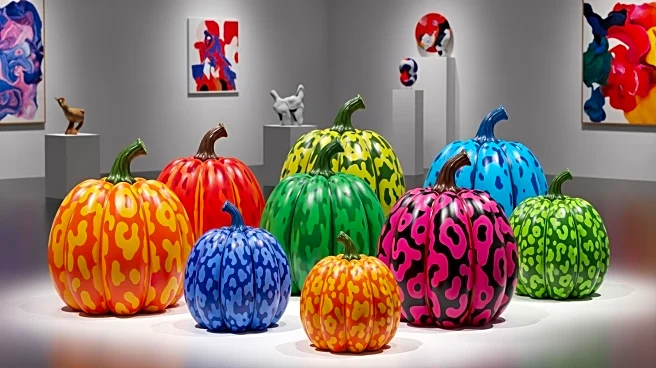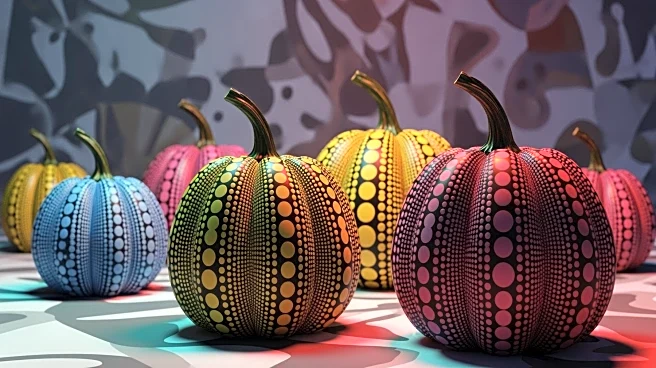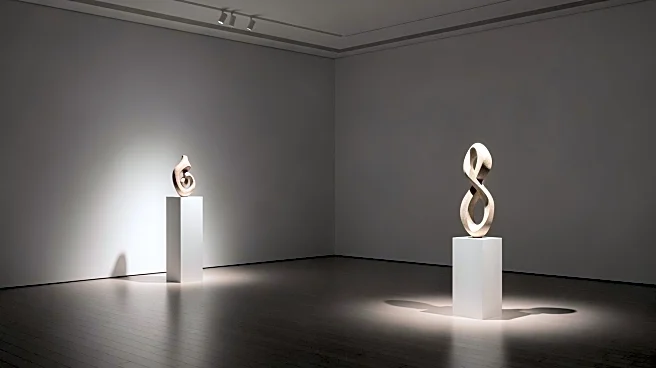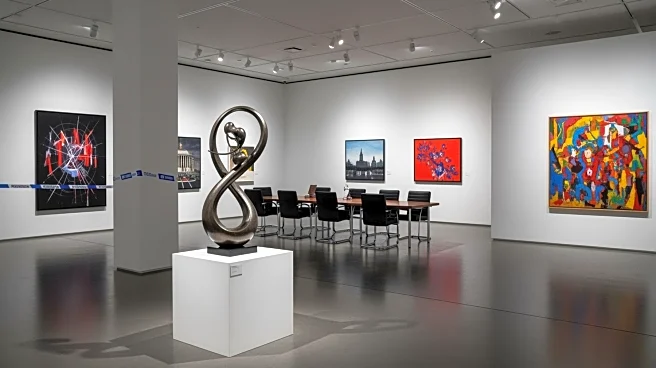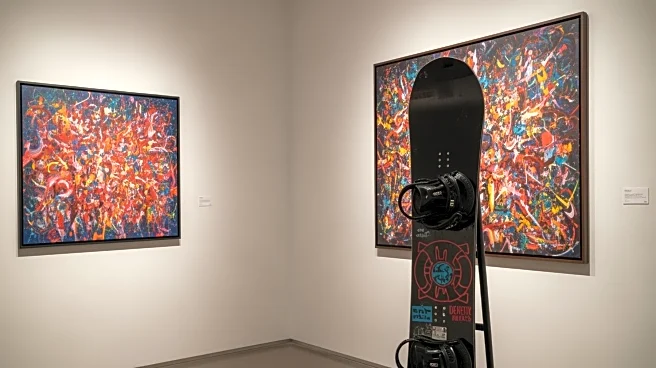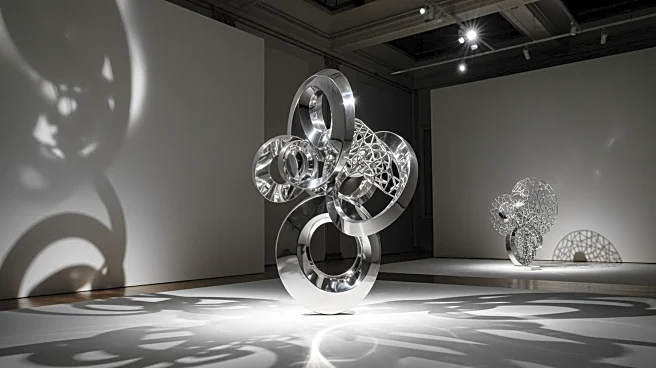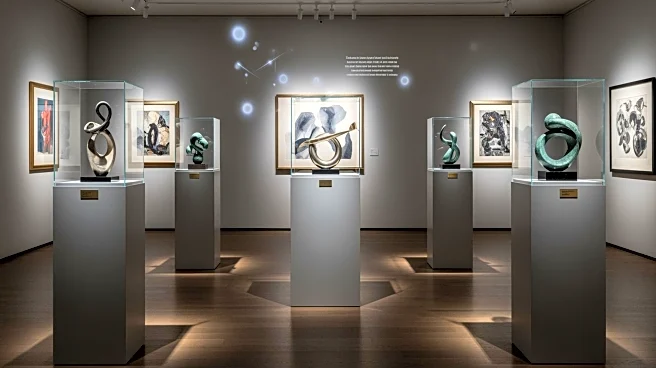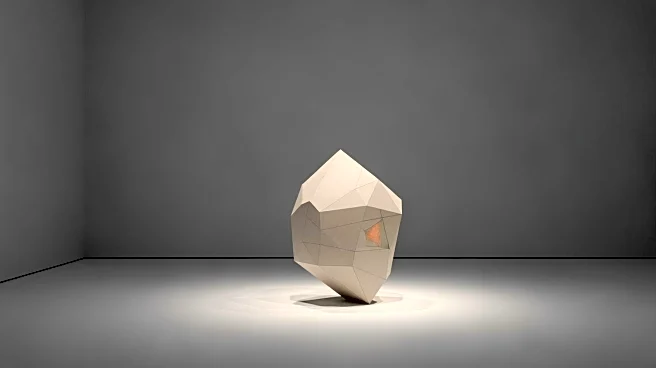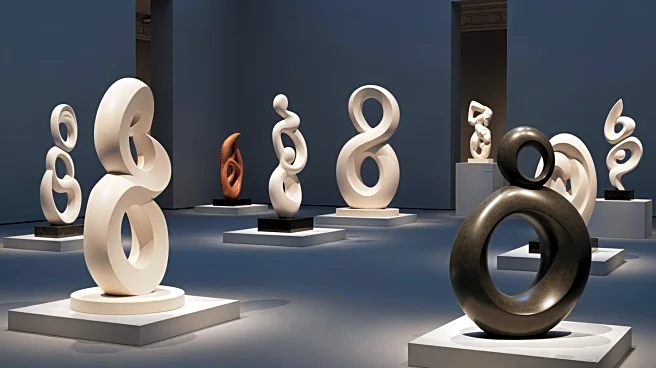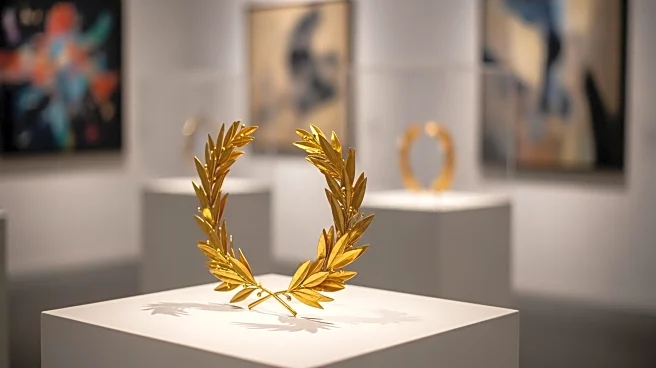What's Happening?
Yayoi Kusama's polka-dotted pumpkin sculptures have become a global phenomenon, appearing in art installations worldwide. Originating from Naoshima, Japan, these sculptures have spread to various international
locations, including the Hirshhorn Museum in Washington, D.C., and the National Gallery of Victoria in Melbourne. Kusama's pumpkins, known for their vibrant colors and whimsical designs, have become iconic in the art world, drawing significant attention and foot traffic to museums. The artist, who has been creating these works since the 1940s, has seen her pumpkins become a staple in contemporary art, often compared to the works of Monet and O'Keeffe in terms of recognizability.
Why It's Important?
The widespread appeal of Kusama's pumpkin sculptures highlights a shift in the art world towards more accessible and visually engaging works. These installations have become major attractions, boosting museum attendance and membership significantly. For instance, the Hirshhorn Museum experienced a 6,566 percent increase in membership following a Kusama exhibition. This trend underscores the economic impact of art that resonates with a broad audience, providing financial stability to cultural institutions. Kusama's work, which is both popular and critically acclaimed, bridges the gap between high art and public appeal, making it a valuable asset for museums seeking to attract diverse visitors.
What's Next?
As Kusama's pumpkins continue to gain popularity, more art institutions may seek to acquire or exhibit her works to capitalize on their drawing power. This could lead to increased competition among museums to host Kusama exhibitions, potentially driving up the value of her art. Additionally, the continued success of these installations may inspire other artists to create similarly engaging and accessible works, further transforming the landscape of contemporary art. Museums may also explore new ways to integrate interactive and photogenic art pieces to attract visitors in an increasingly competitive cultural market.
Beyond the Headlines
Kusama's pumpkins, while visually appealing, also carry deeper meanings related to the artist's personal experiences and broader social themes. Her use of polka dots and repetitive patterns is rooted in childhood hallucinations and has been employed in political advocacy. The pumpkins serve as a self-portrait of Kusama's struggles with conformity and societal norms, offering a relatable narrative for many. This duality of simplicity and complexity in her work challenges traditional notions of art value, emphasizing emotional and cultural resonance over rarity.
